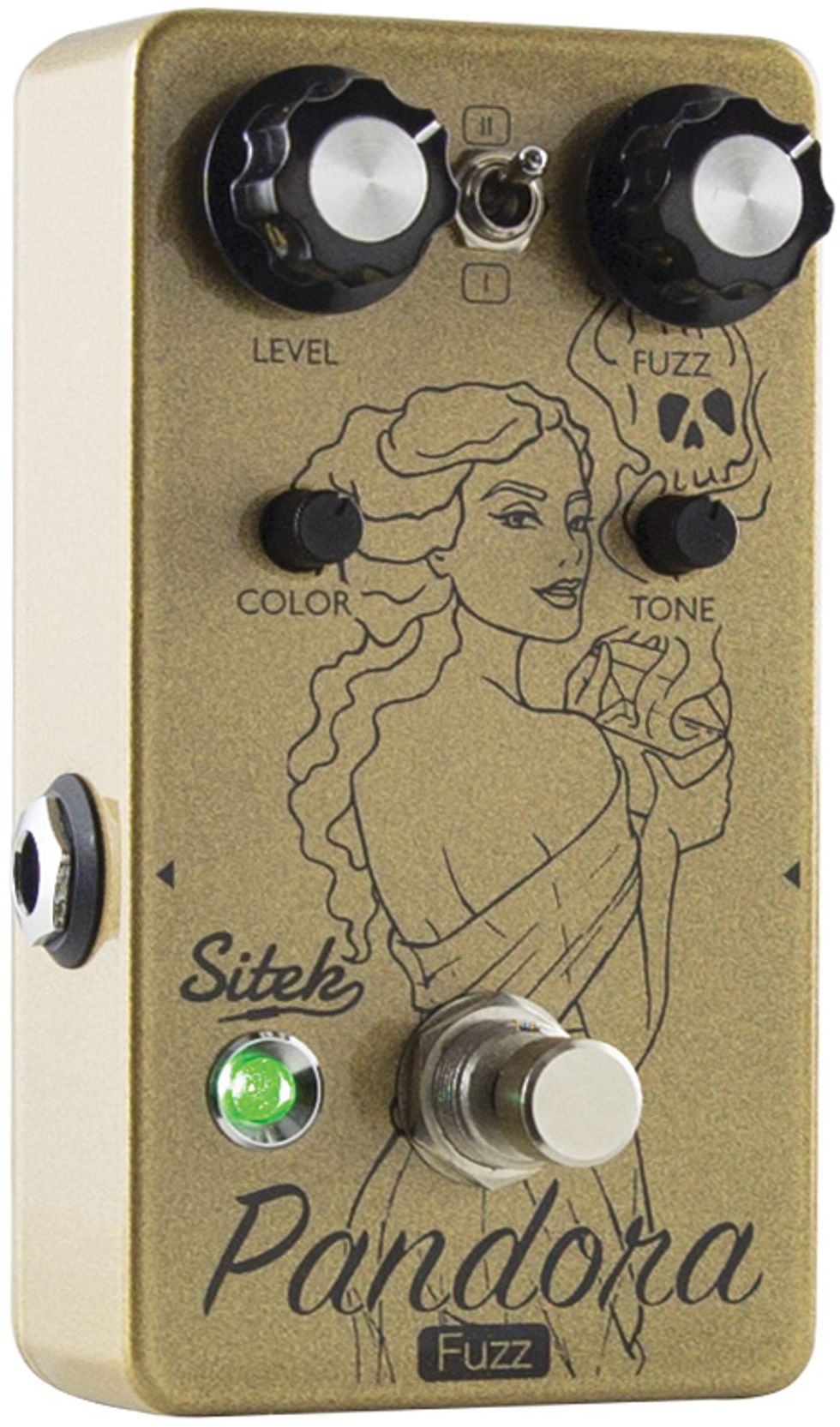Recorded using a Gibson SG and Orange TH-30. Miked with a Shure SM-57 and Apogee Duet into Logic.
RatingsPros:Huge tones with excellent control and range. Cons: No battery option. Street: $165 Sitek Pandora sitek.rocks | Tones: Ease of Use: Build/Design: Value: |
Sitek Handmade Guitar Electronics was founded by Andy and Hania Sitek, a husband-and-wife duo based out of Gdynia, Poland. They affectionately refer to their creations as “sound muses”—a gentle-enough-sounding name until you consider the predominance of fuzzes and overdrives in their product line. The muse featured in this review is named for Pandora, the first mortal woman in Greek mythology. Pandora, the story goes, unleashed no end of mayhem by opening a certain mythological box. At times, this expansive and versatile, vintage-inspired octave fuzz can feel just as explosively potent.
Pandora’s Charms
While none of Sitek’s effects are outright clones, it’s clear they drew some inspiration from the Shin-Ei Super Fuzz when imagining the Pandora’s tone foundation. The Pandora explodes with similar octave aggression, but it offers more ways to shape that octave-fuzzy disposition. The level knob adjusts volume and the fuzz serves up everything from a light dusting of dirt to a wall of fuzzy sound as you turn clockwise. The clipping switch toggles between asymmetrical clipping (with germanium and silicon diodes) and symmetrical clipping (with two NOS germanium diodes). The latter setting provides more compression. In addition, there’s a tone knob and a “color” knob that further accentuates the open/compressed dynamic. Pandora can only be powered using a 9V barrel adaptor. The circuit is handwired and completely analog.
Opening the Box
With five gain stages in the circuit, the octave becomes more prominent with additional fuzz added to the mix. There’s also a lot of gain range. If you roll fuzz all the way down, the output of a P-90-equipped Gibson SG will yield just a touch of dirt, which becomes dirtier still with symmetrical clipping engaged. These tones are robust, but imbued with a touch of splatty, dying-battery fizz that crumbles between sustained notes. You get less of the sputtering effect with a Les Paul’s humbuckers, though it never disappears entirely.
Needless to say, this is not the best fuzz if your ultimate goal is the silkiest-possible sustain. Cranking up the fuzz around 2 or 3 o’clock is where the magic happens for blistering leads. This is where you’ll source those Pete Townshend Super Fuzz sounds—the type of tone where speakers seem to teeter at the verge of shredded oblivion. That said, the Pandora cleans up surprisingly well in response to guitar-volume attenuation, which makes for dramatic quiet-to-mayhem moments between verses or mellow jam sections and solos.
When paired with a Stratocaster, the Pandora hints strongly at Hendrix-like octave tones with the fuzz around 12 o’clock and symmetrical clipping. But for my ears, the Pandora and a single-coil pickup are better suited for Mudhoney raunch than “Purple Haze”-style leads. In general, the symmetrical clipping seems to be the better bet for leads, and I enjoyed the wider range in asymmetrical mode for rhythm passages, or creating a wall of fuzz with the help of a heady reverb.
The Verdict
This is a superb octave fuzz that dishes up amazing tones with almost any kind of pickups. While there’s plenty of gain, I was surprised by how clean and rich it can sound in low-gain situations. There’s also something distinctly hi-fi about the Pandora, and it behaves like a really well-engineered pedal, which makes the price seem especially fair.








![Rig Rundown: Russian Circles’ Mike Sullivan [2025]](https://www.premierguitar.com/media-library/youtube.jpg?id=62303631&width=1245&height=700&quality=70&coordinates=0%2C0%2C0%2C0)


























